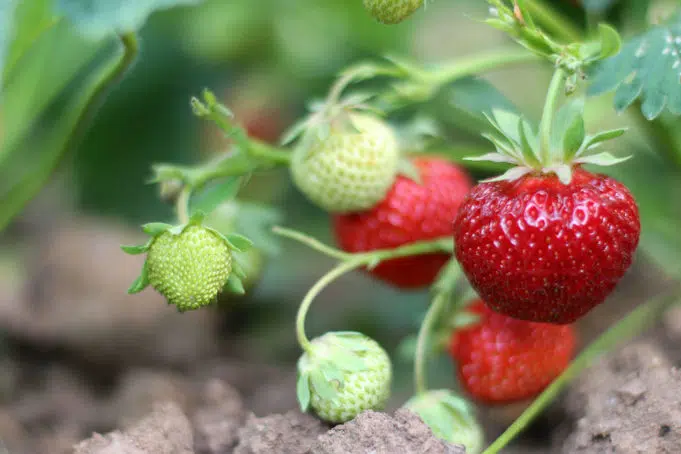Every gardener is delighted when in the spring his lovingly tended strawberries open abundant flowers, because they promise a bountiful harvest. If the Fragaria goes on a conquest tour with its tendrils along the way, on the other hand, the joy is mixed. While some are grateful for new, free plantlets, others see runners with strawberries as useless energy robbers. Both considerations argue for cutting them in due course.
Contents
Offshoots – a useful facility of nature
Strawberries are herbaceous plants that reproduce creeping above ground. Therefore, the formation of runners is not a disturbance in growth, but a sensible action of the plant. In this way, it wants to reproduce and conquer new territories, even if in addition there is the possibility of seed multiplication. However, not all commercially available varieties form tendrils.
Follow without cutting
In order to decide whether cutting the tendrils and young plantlets is useful, we should consider what the effects would be if we did not do this. The following key points should make this clear:
- young strawberry plants are formed on the tendrils
- so-called runners or also called children
- they take root and grow larger and larger over time
- at first, however, they are supplied by the mother plant
- this energy is missing for the fruit development
- eventually, the children become independent Fragaria plants
- in the foreseeable future they too will sprout tendrils
- the increasing number of plants forms a thicket
- individual specimens compete for space, water and nutrients
The above points make it clear that it is urgent to create order in the strawberry bed, so that the plants thrive in it optimally. Depending on what use the runners in strawberries, both the procedure and the timing for cutting differ.
Cut unwanted runners
When runners are not desired on strawberries, they can test a gardener’s patience. They come in large numbers and repeatedly throughout the growing season that removing them from the bed becomes sweaty work. Especially if the children are already firmly rooted to the ground. Moreover, since each day of growth takes valuable energy from the mother plant, the time for their removal can not be chosen soon enough.
- look for it already from May
- Immediately remove any tendrils that are discovered
- as soon as they appear and cut them before they take root
- cut at the base of the shoots at the leaf axils
- dig out already formed and rooted Kindl
- repeat this maintenance work at regular intervals
Cut runners for propagation
Strawberries bear well only in the first three years, after which the yield decreases noticeably. Therefore, the bed is regularly rejuvenated with new plants. What could be more natural than to take the offspring from your own garden. It is available completely free of charge. During the harvest season, you can also mark the best bearing and tastiest plants and selectively use their offspring for propagation. The optimal time for propagation is from the end of July to mid-August. Since the runners on strawberries begin to appear as early as May, in the meantime, proceed as follows:
- Select offspring for propagation
- they should come exclusively from healthy plants
- mark with sticks or labels
- Kindles close to the mother plant are the strongest and biggest ones
- their chances are the best to bloom next year
- cut off and transplant rooted specimens at planting time
- plant unrooted Kindl in small pots in the meantime
- cut off the connection with the mother plant only in the middle of August
- then plant or overwinter with pot in the cellar
- always cut all unneeded runners early
- remove immediately from the bed
- keep at this work, since new shoots are to be expected continuously
Do not tear, cut!
The strawberries do not form woody parts of the plant. Nevertheless, the thin tendrils are surprisingly stable. At most, when they are just beginning to sprout, they can be pinched off with your fingers. Therefore, go through the bed with sharp, clean scissors or, alternatively, with a sharp knife. Do not tear at the tendrils under any circumstances. The unclean tearing wounds cannot heal well and are also entry points for pathogens. If the childels have already formed roots, they are sometimes surprisingly firmly attached to the ground and may need to be dug out with a mini spade.
Cultivating strawberries as ground covers
Lazy gardeners purposefully use climbing strawberry varieties as ground covers. To begin with, a few strawberries are planted about 20-25 cm apart. The gaps between them they will fill in time with their offspring. From time to time it will be necessary to thin out a bit if the harvest is to be right. This involves removing older plants from the bed that are no longer bearing well. The best time to do this is immediately after harvest. It will also occasionally be necessary to curb their urge to spread, so that a piece of free soil remains for other vegetable and fruit plants.










